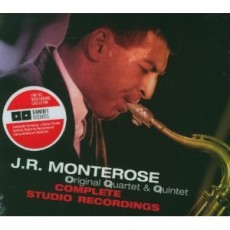
Daily Dose Of Jazz…
J. R. Monterose was born Frank Anthony Peter Vincent Monterose, Jr. in Detroit Michigan on January 19, 1927. A few months after his birth, the family moved to Utica, New York and this is where he began formal clarinet studies at thirteen. After hearing the Glenn Miller soloist Tex Beneke J.R. taught himself to play tenor saxophone with his early influences Coleman Hawkins and Chu Berry. He also found harmonic inspiration in pianist Bud Powell and learned chord changes from guitarist Sam Mancuso.
Monterose first stepped into the professional arena playing in upstate New York territory dance bands in the late forties. In 1950 he joined the Henry “Hot Lips” Busse touring orchestra, then the Buddy Rich band in ’51 but left for lack of soloing opportunities.
By the mid to late 50s he was in New York City as a featured soloist with Claude Thornhil’s orchestra and with vibraphonist Teddy Charles’ modernist groups, Charles Mingus’s Jazz Workshop and Kenny Dorham’s short-lived Jazz Prophets. He recorded two sessions with Alfred Lion for Blue Note as a leader, “J.R. Monterose” in 1956 and “The Message” in 1959.
Throughout his life he continued to pursue his ever-evolving craft in small time U.S. venues and during extended stays in the late 1960’s through the mid 1970’s in Belgium, The Netherlands and Denmark with occasional low-profile recordings. His preference for small group work in out of the way places would shape much of his subsequent career, contributing to the musical growth upon which he was always so intently focused but ultimately relegating him to an undeserved obscurity.
He steadfastly refused to be pigeonholed in any particular style and was quoted as saying “ I’ve tried all my life to avoid copying. If I can’t be myself, there’s no point in being in jazz”. Tenor saxophonist J.R. Monterose passed away on September 16, 1993.
More Posts: saxophone
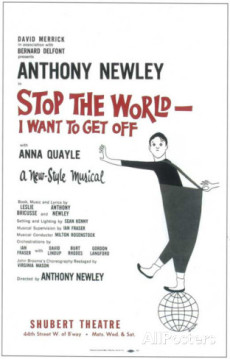
From Broadway To 52nd Street
Stop The World I Want To Get Off opened at the Shubert Theatre on October 2, 1962. Running for 555 performances The music and lyrics were composed by Leslie Bricusse and Anthony Newley. The musical starred Anthony Newley as Littlechap and Anna Quayle portrays Evie. Fortunately for the jazz world one of their tunes would enter the pantheon of jazz classics – What Kind Of Fool Am I.
The Story: Set against the backdrop of a circus, it focuses on Littlechap, whose first major step towards improving his lot is to marry Evie, his boss’ daughter. Saddled with the responsibilities of a family, he allows his growing dissatisfaction with his existence to lead him into the arms of various women – Russian Anya, German Ilse, and American Ginnie – as he searches for something better than he has, only to realize in the twilight of his life what he always had – the love of his wife – was more than enough to sustain him.
Broadway History: In 1950, the tradition of the gypsy robe was born on Broadway, when a chorus member in Gentlemen Prefer Blondes sent the worn-out robe of a fellow chorus member to a friend in a different production. Since then, the robe has been passed to the chorus member with the most credits on the opening night of Broadway plays, with each former “gypsy” adding a prop from his or her performance.
Sponsored By
www.whatissuitetabu.com
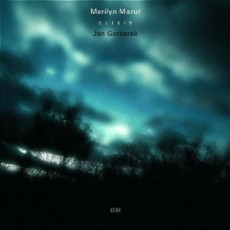
Daily Dose Of Jazz…
Marilyn Mazur was born on January 18, 1955 of Polish and African American descent in New York but grew up on Denmark from the age of six. Primarily a self-taught percussionist and drummer, she got a degree in percussion at the Royal Danish Academy of Music.
From 1975, Mazur has worked as a percussionist with various groups, among others, the group Six Winds with Alex Riel. She has performed with such notables as Niels-Henning Orsted Pederson, Jan Garbarek, Miles Davis, Gil Evans, Wayne Shorter Jeanne Lee and Palle Mikkelborg to mention a few.
By 1989, Marilyn founded her band Future Song, a sextet with her husband Klavs Hovman. A second project, Percussion Paradise, brought together percussionists Benita Haastrup, Lisbeth Diers and Birgit Løkke.
Marilyn Mazur is also a composer, pianist, dancer and bandleader and has been selected by Down Beat in 1989, 1990 and 1995 as a “percussion talent deserving wider recognition”. In 2001, she was awarded the Jazzpar Prize, the world’s largest international jazz prize. She continues to record, perform and tour.
More Posts: bandleader,drums
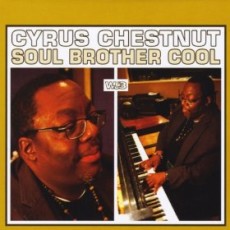
Daily Dose Of Jazz…
Cyrus Chestnut was born January 17, 1963 in Baltimore, Maryland. He started his musical career at the age of six, playing piano at Mount Calvary Baptist Church. By age nine, he was studying classical music at Peabody Institute and in 1985 earned a degree in jazz composition and arranging from Berklee College of Music where he was awarded the Eubie Blake Fellowship, the Quincy Jones Scholarship and the Oscar Peterson Scholarship.
A year after graduating his prolific career began with a tour with Jon Hendricks, followed by two-year stints with Terence Blanchard, Donald Harrison, Wynton Marsalis and Betty Carter. Under Betty’s tutelage, Cyrus was advised to take chances and play things she had never heard.
Signing with Atlantic Records in 1993 he released the critically acclaimed Revelation followed by The Dark Before The Dawn the next year, debuting at #6 on the Billboard charts. He has performed and/or recorded with Freddy Cole, Bette Midler, Freddie Hubbard, Jimmy Scott, Chick Corea, Isaac Hayes, Kevin Mahogany, Dizzy Gillespie, Manhattan Transfer, Vanessa L. Williams, Brian McKnight, Christian McBride, Lewis Nash, James Carter, Wycliffe Gordon and the list continues.
Never straying far from his church roots he collaborated and toured with soprano opera diva Kathleen Battle, recording the notable “So Many Stars” in 1996. Later that same year came Blessed Quietness: A Collection of Hymns, Spirituals and Carols.
Chestnut’s leadership and prowess as a soloist has also led him to be a first call for the piano chair in many big bands including the Lincoln Center Jazz Orchestra, Dizzy Gillespie Big Band and the Carnegie Jazz Orchestra. He has amassed a further string of critically acclaimed albums while continually touring with his trio, playing jazz festivals around the world as well as clubs and concert halls.
More Posts: bandleader,composer,piano
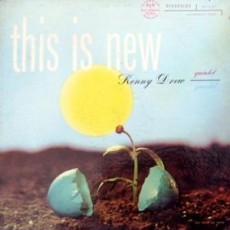
Daily Dose Of Jazz…
Wilbert Granville Thodore Hogan Jr., better known as G. T., was born January 16, 1929 in Galveston, Texas. He started out playing saxophone into high school but then switched to the drums. He started playing professionally with Earl Bostic from 1953-55 prior to his move to New York City.
During this period G. T. worked with Randy Weston, recorded with Elmo Hope and was closely associated with Bud Powell during his Parisian sojourn. Over the course of his career he worked with Kenny Drew, Walter Bishop Jr., Ray Charles, Kenny Dorham, Cecil Payne, Wilbur Ware, Julian Priester and Hank Crawford.
A brilliant drummer whose backbeat personified the kind of rhythmic approach that easily made Hogan recognizable as a Texas drummer and whose magnificence shone when teamed with an individualistic pianist. By the 70s he became less active in music but continued into the 90s when he began to suffer from emphysema. Recording on more than 50 albums and credited in a variety of ways as Granville Hogan, Wilbert Hogan, G. T. Hogan, W. T. Hogan and Wilbert G. T. Hogan, the drummer passed away on August 7, 2004 in San Antonio, Texas.
More Posts: drums


